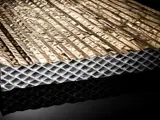Make your home warmer, greener and more efficient
Cut energy bills and reduce carbon emissions with smarter insulation. From cavity walls to lofts, windows to floors, there are many effective ways to keep the heat in and save money all year round.
Insulating your home is one of the most effective ways to lower energy use and cut CO2 emissions. Done properly, it can significantly reduce heating costs and maintain comfort—without needing constant upkeep.
Need a quote, order or guidance?
Whether you’re ready to place an order or just need a bit of support, we’re here to help.
Contact us today for pricing, product advice or practical next steps – whatever you need to move your project forward.
Types of insulation materials
There’s a wide range of insulation materials to choose from, each with different benefits in terms of performance, cost and sustainability. Most resist heat loss through trapped air or gas, while reflective foil products work by deflecting radiant heat.

Cavity wall and solid wall insulation
Cavity wall insulation is highly cost-effective, preventing around a third of heat loss from homes with suitable construction. For older properties with solid walls, insulation can be added either internally or externally to reduce heat loss by up to 50%.

Loft insulation: a simple energy win
Around a quarter of heat is lost through the roof in an uninsulated home. Loft insulation is one of the easiest DIY improvements you can make to boost energy efficiency and reduce bills.

Insulating floors and sealing draughts
Timber floors can be insulated by laying wool between joists and sealing gaps to block draughts. Simple fixes like silicone sealant around skirting boards also make a real difference over time.

Draught proofing: quick, cheap, effective
Unwanted gaps around windows, doors and letterboxes let heat escape. Draught proofing is a low-cost way to make your home more comfortable while reducing wasted energy.

Energy efficient glazing
Replacing old windows with double or triple glazing improves energy performance and reduces noise. Both options offer excellent insulation without the need to go straight to triple glazing.

